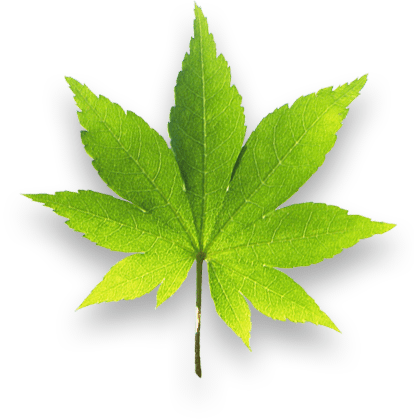Variability In The Rate Of Human Aging Between Individuals
The difference between the slowest and fastest rate of human aging was shown to be a factor of three in a study from New Zealand which tested 954 individuals that were all born in the same year and in the same town. The study lasted for about two decades while the study subjects were in their 30s and 40s (Belsky DW 2015).
Peaks in Ability
Many physical abilities peak early in life: hearing (age 5) smell (age 10) taste (age 10) muscle strength (age 10) flexibility and balance (age 13) tissue repair (age 13) immune response (age 13) lung capacity (age 20) short term memory (age 20). Most bodily functions peak shortly before age 30 and then begin a gradual but continuous decline.
Peaks in Female Facial Fertility Cues
Lips (age 25) – thickness, redness, and eversion of lips; Eyes (age 25)– largeness, whiteness and contrast; Cheekbones (age 25) – prominence and roundness, These are pads of estrogenized fat above the zygomatic bones which tend to shrink with age and the overlying skin loses its vasodilated red blush; Complexion (age 25) – the translucence, radiance, evenness, and smoothness of facial skin; Head Hair (age 25) – the thickness, length, color saturation, and glossiness
Aging Cells
Cells generally becoming larger with age and adopt phenotypes that including flattened cell morphology, altered gene expression, and altered secretion profiles. The cell’s capacity to divide and reproduce decreases. Cell membranes change, so have more trouble getting oxygen, ions, and nutrients and removing carbon dioxide and wastes. Cellular changes occur in enzyme quantity and quality. There is an increase of pigments and fatty substances inside the cell. Waste products build up in cells with aging. Cellular DNA is damaged during aging. In the nucleus chromosomes changes include clumping, shrinkage, and fragmentation. Organelles such as the mitochondria and lysosomes numbers are reduced, causing cells to function less efficiently. Cells during aging may be damaged by harmful substances, such as radiation, sunlight, and drugs. Cells may also be damaged by certain by-products of their own normal activities. The main by-product of energy production are free radicals. Many cells lose their ability to function, or they begin to function abnormally. Cells have built-in mechanisms to repair damage, but the cell’s ability to repair declines. There are 50 trillion cells in the human body
Aging Tissues
Eyesight – loss of peripheral vision and decreased ability to judge depth. Decreased clarity of colors (for example, pastels and blues). Most people in their 40s develop a need for reading glasses as the lenses in the eyes become less flexible. It’s also normal for night vision and visual sharpness to decline, while glare increasingly interferes with clear vision in the later years.
Hearing – loss of hearing acuity especially sounds at the higher end of the spectrum. Also, decreasing the ability to distinguish sounds when there is background noise.
Taste – decreased taste buds and saliva.
Smell – decreased ability to smell
Touch – decreased sensitivity to touch.
Height – By age 80, it’s common to have lost as much as 2 inches in height. This is often related to changes in posture and compression of joints, spinal bones, and spinal discs
Skin – The oil glands gradually produce less oil, making the skin drier than before. Dry Skin affects many older people, particularly on their lower legs, elbows, and forearms. Skin is more wrinkled. It also heals more slowly. With age, the skin becomes less elastic. Fingernail growth also slows.
Hair. Hair to gradually thin on the scalp, pubic area, and armpits. As hair pigment cells decline in number, gray hair growth increases.
Body Fat – increases until middle age, stabilizes until later in life, then decreases. Distribution of fat shifts – moving from just beneath the skin to surround deeper organs.
Muscles – muscle mass decline, especially with lack of exercise. Muscle strength, coordination, reflexes, balance, decline as well with poor exercise tolerance. By 85, muscle strength has decreased by 45%.
Bones – Around age 35, bones lose minerals faster than they are replaced. Throughout adulthood, men and women gradually lose some of the mineral content in their bones. The bones get less dense and strong.
Connective Tissue – Collagen and elastin decrease in connective tissue formation, resulting in joint and other tissues becoming stiffer, less elastic, and less efficient in their function. This makes the organs, blood vessels, and airways more rigid.
Brain – loses some of the structures that connect nerve cells, and the function of the cells themselves is diminished. It will take longer to remember things and word finding ability decrease.
Heart – is a muscle that thickens with age. Maximum pumping rate and the body’s ability to extract oxygen from the blood both diminish with age.
Arteries – stiffen with age. Fatty deposits build up in your blood vessels over time, eventually causing hardening of the arteries.
Kidneys – shrink and become less efficient. By 85, kidney function has decreased by 30%.
Bladder – Reduced bladder elasticity, increased frequency in urination, loss of bladder control. Benign prostatic enlargement in men.
Lungs – somewhere around age 20, lung tissue begins to lose its elasticity, and rib cage muscles shrink progressively. Maximum breathing capacity diminishes with each decade of life. By 85, lung capacity has decreased by 50%.
Metabolism – Over time, the body typically needs less energy, and your metabolism slows. About 40 percent of adults ages 40 to 74 have pre-diabetes. Metabolism is decreased to about 95% of capacity by age 50, and to 85% by age 70.
Digestion – Malabsorption examples, folic acid and Vitamin B12
Inflammation – increased
Hormone levels – change
Water content of body – The total amount of water in the body gradually decreases
Tissue loss – Many tissues lose mass, a process called atrophy. Some tissues become lumpy or more rigid. Certain cells that are important for our immune system to work properly (example: T-cell lymphocytes) decrease with age.
Organ’s reserve ability – Initially organs have functional ability beyond their usual needs (example, the heart of a 20-year-old is capable of pumping about 10 times the amount of blood that is actually needed to keep the body alive. After age 30, an average of 1% of this reserve is lost each year). The biggest changes in organ reserve occur in the heart, lungs, and kidneys. The amount of reserve lost varies between people and between different organs in a single person. These changes appear slowly and over a long period of time. Things that produce an extra workload (body stressors) include the following: Illness, Medications, Significant life changes. Age causes changes in our responses to environmental stresses or exposures, such as ultraviolet light, heat, not enough oxygen, poor nutrition, and toxins (poisons) among others. Loss of reserve also makes it harder to restore balance (equilibrium) in the body. Drugs are removed from the body at a slower rate. Lower doses of medications may be needed, and side effects become more common.
Sexual Health – Hormone levels decrease
Women: go through menopause, vaginal lubrication decreases and sexual tissues atrophy.
Men: sperm production decreases and the prostate enlarges.
Sleep – Changes in sleep and circadian rhythm occur as you age. You sleep less at night. You may not sleep as deeply. You are more likely to wake up during the night and/or wake up earlier in the morning.




